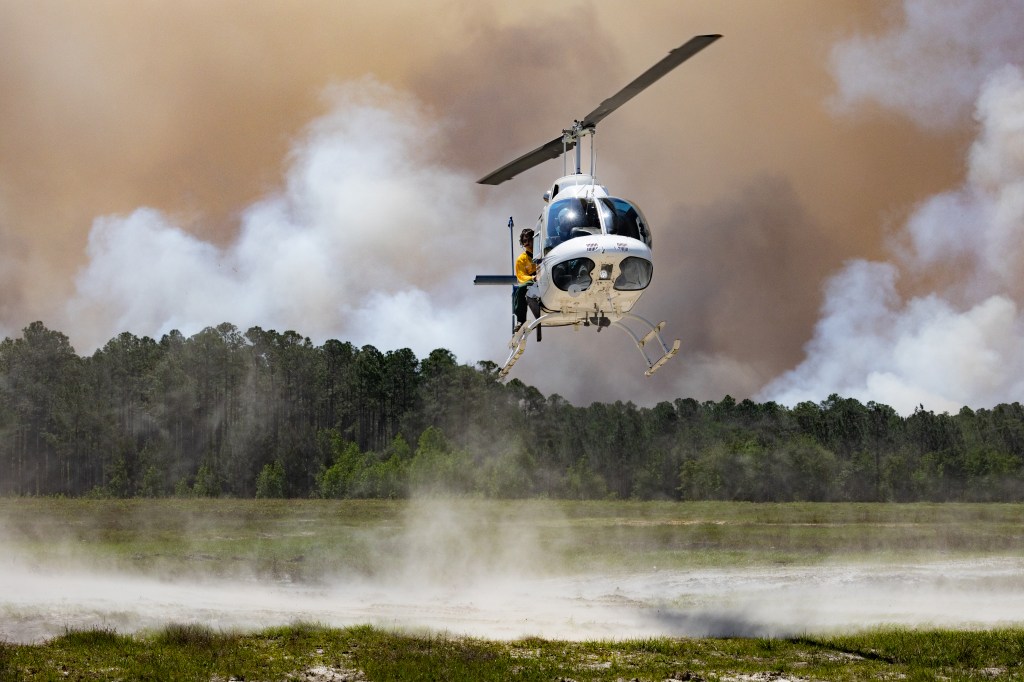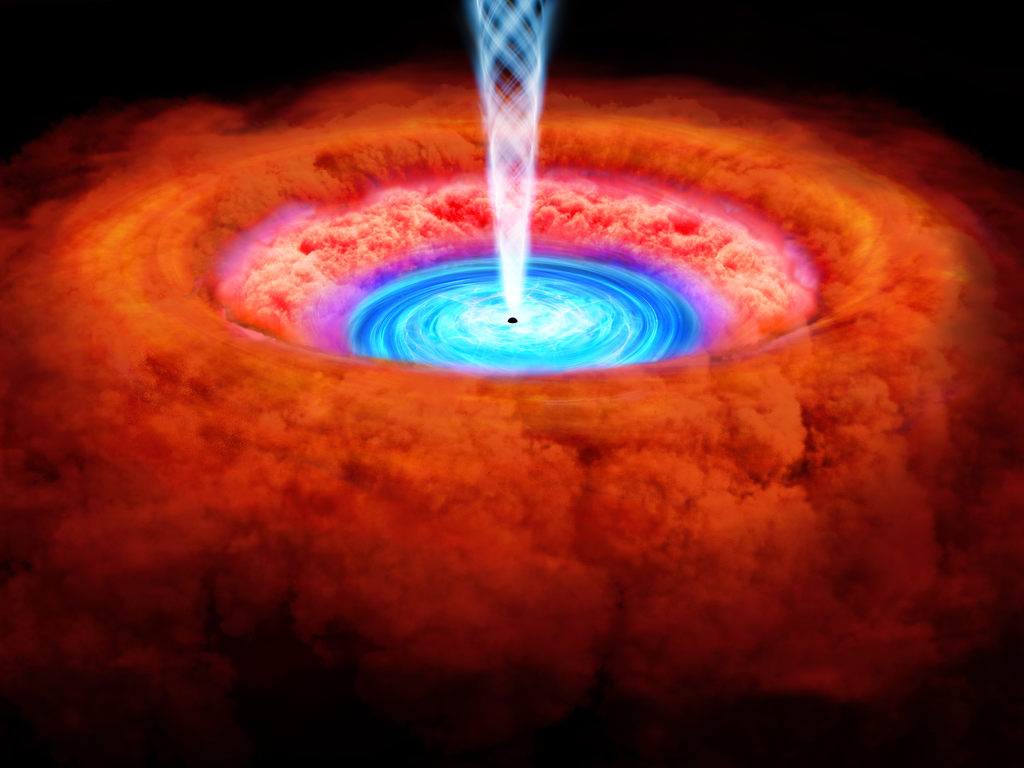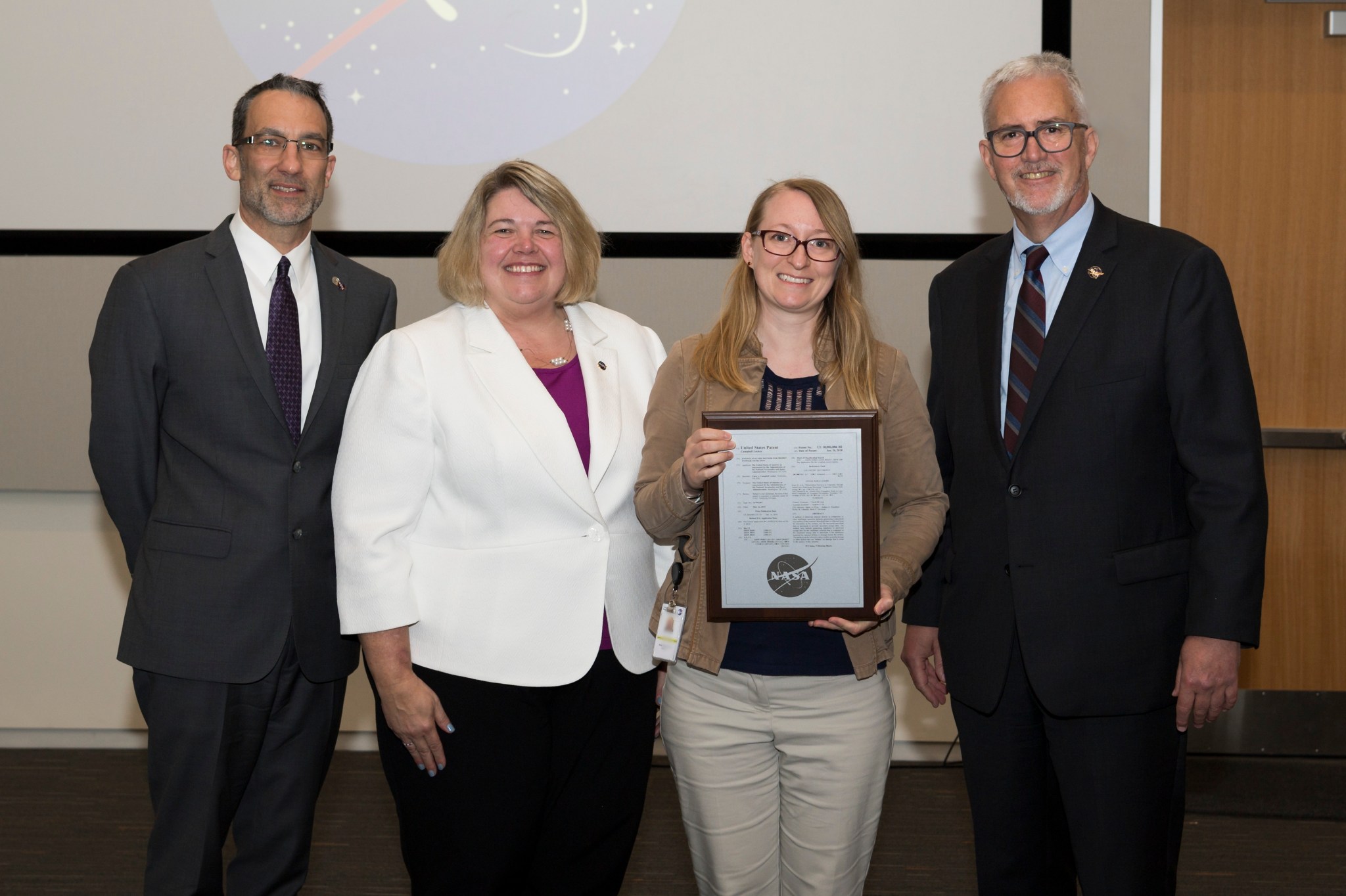The hallmarks of innovation, invention and technological advances is central to NASA Langley Research Center’s DNA, and during a May 14 ceremony in the Reid Conference Center here, some of the center’s most imaginative and successful employees were honored for their recent inventions.
The 2019 Patent and Technology awards, which recognize NASA inventors who received a United States patent in the prior calendar year, were presented to more than 60 researchers for 28 innovations ranging from locomotion of amorphous surface robots to a flame holder system.
“You’re helping us reach new heights and expand knowledge for all humankind and to many markets,” said Jill Marlow, Langley’s associate director for technical.
The center develops technologies for space exploration, for advancing the understanding of the Earth’s climate, and for improving air transportation. Through partnerships, Langley’s Technology Transfer Office helps foster new technologies and relationships that can be mutually valuable in reducing research and development costs, expanding capabilities, accelerating solutions to technical challenges and creating new products.
“You really are the fuel that helps move NASA forward.”
Jill Marlow, NASA Langley’s associate director for technical
“Our job is to take what you create in the lab … and transfer it out in the commercial sector,” said Andrea Warmbier, Langley deputy chief counsel.
The patents from Langley have applications in science, aeronautics, medicine, auto and marine manufacturing.
“It’s exciting we’ve got such a robust program here,” Warmbier said.
During the ceremony, Langley’s inventors were praised for their creative work and urged to keep pressing forward in the advance of NASA’s missions, notably the agency’s return to the Moon in 2024.
“Your innovations are key to make that happen,” Marlowe said. “You really are the fuel that helps move NASA forward.”
The event’s keynote speaker, Virginia Deputy Secretary Of Commerce and Trade for Technology Robby Demeria, told attendees of the economic and educational value Langley brings to not only Virginia and the United States, but the world.
“You are a key part of our cultural fabric,” he said. “Please keep innovating.”
Receiving United States Patents
- Juan M. Fernandez for Sheath-Based Rollable Lenticular-Shaped and Low-Stiction Composite Boom
- Qamar A. Shams, Allan J. Zuckerwar* and Albert L. Dimarcantonio for Infrasonic Stethoscope for Monitoring Physiological Processes
- William J. Fredericks, Mark D. Moore, Ronald C. Busan, Paul M. Rothhaar, David D. North, William M. Langford, Christopher T. Laws, William T. Hodges, Zachary R. Johns and Sandy R. Webb for Vertical Takeoff and Landing Vehicle with Increased Cruise Efficiency
- Arthur T. Bradley for Locomotion of Amorphous Surface Robots
- Keith L. Gordon and Emilie J. Siochi for Mechanoresponsive Healing Polymers
- Christopher J. Wohl Jr., Pacita I. Tiemsin, Paul M. Danehy and Jason E. Danley for Method of Making Dye-Doped Polystyrene Microparticles
- Jin Ho Kang, Cheol Park, Chase Taylor, Godfrey Sauti, Luke J. Gibbons, Iseley Marshall, Sharon E. Lowther, Peter T. Lillehei, Joycelyn S. Harrison and Robert G. Bryant for Solar Radiation Control and Energy Harvesting Film
- Stephen J. Hales, Joel A. Alexa, Brian J. Jensen, Roberto J. Cano and Peter T. Lillehei for Nanoparticle Hybrid Composites by RF Plasma Spray Deposition
- Narasimha S. Prasad for Photoacoustic Chemical Detector
- Jin Ho Kang, Cheol Park, Godfrey Sauti, Michael W. Smith, Kevin C. Jordan, Sharon E. Lowther and Robert G. Bryant for High Kinetic Energy Penetrator Shielding and High Wear Resistance Materials Fabricated with Boron Nitride Nanotubes (BNNTs) and BNNT Polymer Composites
- Cara Campbell Leckey for Energy Analysis Method for Hidden Damage Detection
- Edward R. Generazio for Solid State Ephemeral Electric Potential and Electric Field Sensor
- Mahyar R. Malekpour for Self-Stabilizing Distributed Symmetric-Fault Tolerant Synchronization Protocol
- Stanley E. Woodard*, Chuantong Wang and Bryant D. Taylor for Wireless Temperature Sensing Method Using No Electrical Connections
- Mark W. McElroy for Simulation Tool for Damage in Composite Laminates
- Qamar A. Shams and John F. Sutton for Variable Permeability Magnetometer Systems and Methods for Aerospace Applications
- Donald L. Thomsen III, Roberto J. Cano, Brian J. Jensen, Stephen J. Hales and Joel A. Alexa for Methods of Making Z-Shielding
- Jason P. Moore and Matthew D. Rogge for System and Method for Optical Frequency Domain Reflectometer
- Grady J. Koch and Bruce W. Barnes for Wind Event Warning System
- David D. North, Mark J. Aull, William J. Fredericks, Mark D. Moore, Paul M. Rothhaar, William T. Hodges and Zachary R. Johns for Tri-Rotor Aircraft Capable of Vertical Takeoff and Landing and Transitioning to Forward Flight
- Henry H. Haskin and Peter Vasquez for Flame Holder System
- Qamar A. Shams, Allan J. Zuckerwar* and Albert L. Dimarcantonio for Infrasonic Stethoscope for Monitoring Physiological Processes
- Sang Hyouk Choi and Adam J. Duzik for Single Crystal Rhombohedral Epitaxy of SiGe on Sapphire at 450°C-500°C Substrate Temperatures
- Kelly Ann Burke, David J. Wing, Joseph G. Ponthieux, Sharon Woods and Stephen DePascale for Method and Apparatus for Providing In-Flight Pilot Interface for Trajectory Optimization
- Jin Ho Kang, Cheol Park and Joycelyn S. Harrison for Methods for Making an Electroactive Device Fabricated with a Nanotube Film Electrode
- Russell A. Wincheski, Jae-Woo Kim, Godfrey Sauti, Emilie J. Siochi and Phillip A. Williams for Magnetic and Raman Based Method for Process Control During Fabrication of Carbon Nanotube Based Structures
- Tian-Bing Xu, Jin Ho Kang, Emilie J. Siochi and Glen C. King for Pyroelectric Sandwich Thermal Energy Harvesters
- K. Elliott Cramer, William T. Yost and Daniel F. Perey for Method to Control Crimping Processes Using Ultrasonic Transmission Analysis
(* Presented posthumously)
Eric Gillard
NASA Langley Research Center























